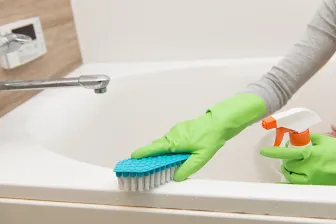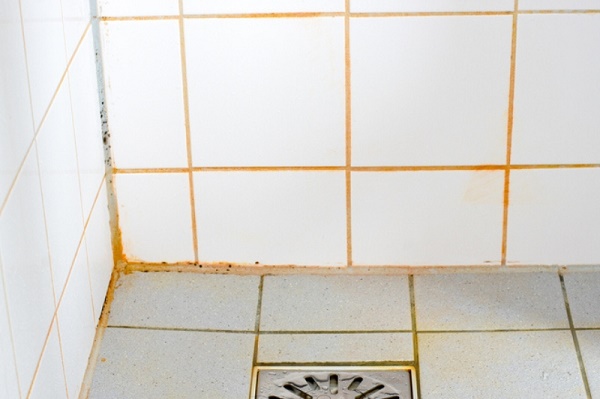How to Get Rid of Orange Mold in Your Bathroom
When it comes to bathroom nuisances, mold is undoubtedly one of the most unwelcome guests. Among the various types of mold that can infest your bathroom, orange mold stands out not only for its unsightly appearance but also for its potential health risks. But fear not. In this post, we’ll walk you through the steps to effectively get rid of orange mold in your bathroom and prevent it from coming back.
What is Orange Mold?
Before we dive into the removal process, let’s first understand what orange mold is. Orange mold is often referred to as “pink mold” or “red mold” due to its coloration. It usually appears as slimy, pinkish-orange spots or patches on bathroom surfaces, including shower tiles, grout, silicone sealant, and even the shower curtain. Despite its vivid color, orange mold is not a typical mold; it’s actually a type of bacteria known as Serratia marcescens
Why Does Orange Mold Thrive in Bathrooms?
To effectively combat orange mold, it’s essential to know why it loves your bathroom:
- Moisture: Orange mold thrives in damp environments, and bathrooms provide the ideal conditions with high humidity levels and frequent moisture exposure.
- Nutrient Source: It feeds on organic materials commonly found in bathrooms, such as soap scum, shampoo residues, and dead skin cells.
- Poor Ventilation: Inadequate ventilation in bathrooms traps moisture and allows mold to flourish.
Now that we’ve demystified orange mold let’s get down to the business of removing it.
Materials You’ll Need
Gather the following materials before you start:
- Protective Gear: Safety goggles, gloves, and a mask to protect yourself from mold spores and cleaning products.
- Cleaning Products: A bleach-based cleaner, hydrogen peroxide, white vinegar, or a commercial mold remover.
- Scrubbing Tools: A stiff-bristle brush, scrubbing sponge, or an old toothbrush.
- Bucket: For mixing and holding cleaning solutions.
- Plastic Bags: To dispose of contaminated cleaning materials.
- Ventilation: Ensure the bathroom is well-ventilated during the cleaning process.
Now that you’re geared up, let’s proceed with the steps.

Step 1: Preparation and Safety
Safety first! Before you start cleaning, make sure to:
- Ventilate the bathroom by opening windows or using an exhaust fan.
- Put on your protective gear – goggles, gloves, and a mask.
- Remove any items or accessories from the area you plan to clean.
Step 2: Mix Your Cleaning Solution
You have a few options for cleaning solutions:
- Bleach Solution: Mix 1 part bleach to 10 parts water in a well-ventilated area. Be cautious when using bleach, as it can be harsh and may damage some surfaces.
- Hydrogen Peroxide: Use undiluted 3% hydrogen peroxide for a milder, eco-friendly option.
- White Vinegar: Pure white vinegar can also be effective and is less harsh than bleach.
Choose the solution that best suits your preferences and any surface sensitivities.
Why Does My Bathroom Smell Like Ammonia
Step 3: Apply the Cleaning Solution
Dip your scrubbing tool into the cleaning solution and generously apply it to the orange mold-affected areas. Ensure thorough coverage.
Step 4: Scrub and Rinse
Using your scrubbing tool, scrub the affected areas vigorously. Be persistent, as orange mold can be stubborn.
Rinse the cleaned areas with clean water to remove any residual cleaning solution.
Step 5: Repeat if Necessary
If the orange mold persists, don’t be discouraged. Sometimes, it may take a few rounds of cleaning to completely remove it. Be patient and persistent.
Step 6: Prevent Future Growth
Now that you’ve conquered the orange mold, let’s prevent its return:
- Ventilation: Ensure your bathroom is well-ventilated. Use exhaust fans, open windows, and keep the bathroom door open after showering to reduce humidity.
- Regular Cleaning: Maintain a regular cleaning routine, including wiping down shower walls and curtains after use.
- Silicone Sealant: Check and replace old or damaged silicone sealant around your bathtub and shower.
- Grout Sealing: Consider sealing your grout to make it less susceptible to mold growth.
- Dehumidifier: If your bathroom consistently has high humidity, a dehumidifier can help maintain optimal moisture levels.
By following these steps and preventive measures, you can bid farewell to orange mold in your bathroom and enjoy a clean, mold-free space. Remember, consistency in cleaning and maintenance is the key to keeping it at bay.
FAQs on How to Get Rid of Orange Mold in the Bathroom
What causes orange mold in the bathroom?
Orange mold, often known as Serratia marcescens, thrives in damp environments with high humidity levels. It feeds on organic materials like soap scum and dead skin cells commonly found in bathrooms. Poor ventilation can also contribute to its growth.
Is orange mold dangerous to health?
While orange mold is not typically toxic, it can cause health issues, especially for individuals with weakened immune systems. It’s essential to remove it promptly to prevent any potential health risks.
Can I use natural cleaning solutions to remove orange mold?
Yes, you can use natural solutions like white vinegar or hydrogen peroxide to remove orange mold. These options are less harsh than bleach and can be effective when applied and scrubbed thoroughly.
How can I prevent orange mold from coming back?
Preventing the return of orange mold involves maintaining good bathroom hygiene. Ensure proper ventilation, clean regularly, replace old silicone sealant, consider grout sealing, and use a dehumidifier if needed.
Can I use bleach to remove orange mold from all surfaces?
While bleach can be effective, it’s essential to be cautious with its use. Bleach can damage some surfaces, so it’s a good idea to test it on a small, inconspicuous area first. Additionally, use it in a well-ventilated space and wear protective gear.
What if the orange mold doesn’t come off after cleaning once?
Orange mold can be stubborn. If it doesn’t come off after the first cleaning, repeat the process until it’s completely removed. Be patient and persistent.
Is there a way to seal grout to prevent orange mold growth?
Yes, you can seal the grout to make it less susceptible to mold growth. Grout sealers create a protective barrier that inhibits moisture penetration and mold development. Follow the manufacturer’s instructions for the best results.
Can orange mold be a sign of a larger mold problem in my home?
Orange mold in the bathroom is usually a localized issue caused by high humidity and poor ventilation. However, if you suspect a more extensive mold problem in your home, it’s a good idea to consult a professional mold remediation expert for a thorough inspection.
What should I do if I have orange mold in my shower curtain?
If your shower curtain has orange mold, you can either clean it using the methods mentioned in this guide or replace it with a new one for a fresh start.
Is there a specific season when orange mold is more likely to appear in the bathroom?
Orange mold can appear throughout the year, as long as the conditions in your bathroom are conducive to its growth. However, it may be more common in humid summer months.
Remember that consistent cleaning and preventive measures are key to keeping orange mold at bay and maintaining a clean and healthy bathroom environment.

